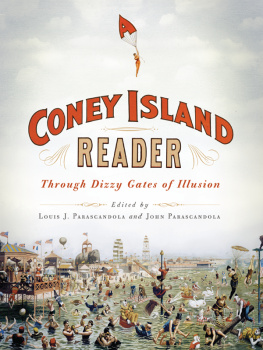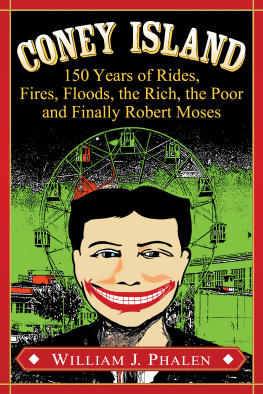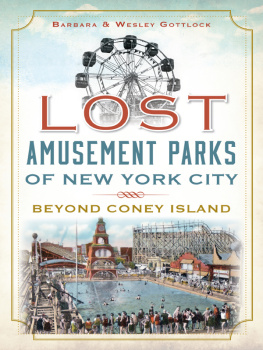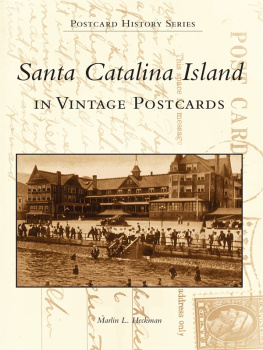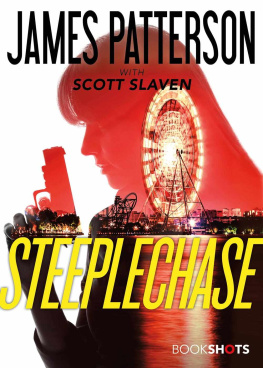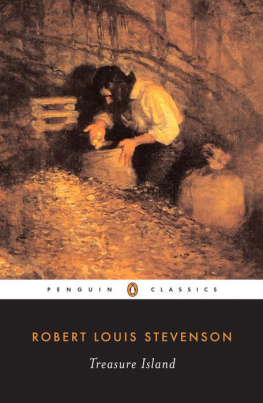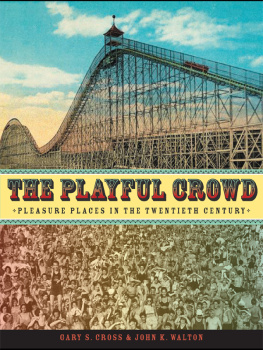A CONEY ISLAND READER


COLUMBIA UNIVERSITY PRESS
Publishers Since 1893
New York Chichester, West Sussex
cup.columbia.edu
Copyright 2015 Columbia University Press
All rights reserved
E-ISBN 978-0-231-53819-0
Library of Congress Cataloging-in-Publication Data
A Coney Island reader : through dizzy gates of illusion / edited by Louis J. Parascandola and John Parascandola.
pages cm
Includes bibliographical references.
ISBN 978-0-231-16572-3 (cloth : acid-free paper)
ISBN 978-0-231-16573-0 (pbk. : acid-free paper)
ISBN 978-0-231-53819-0 (e-book)
1. Coney Island (New York, N.Y.)Literary collections. 2. Amusement parksNew York (State)-Coney IslandHistory. I. Parascandola, Louis J., 1952- editor. II. Parascandola, John, 1941- editor.
PS509.N5C66 2015
808.803274723dc23
2014022522
A Columbia University Press E-book.
CUP would be pleased to hear about your reading experience with this e-book at .
FRONTISPIECE: Charles H. Johnson, A Visit to Coney Island, Harpers Weekly, September 12, 1891.
48-49: Brighton Beach. (Photograph published by Bain News Service, New York. Library of Congress, Prints and Photographs Division)
80-81: Bowery by Night on Coney Island, N.Y., ca. 1912. (Postcard published by American Art Publishing Company, New York. Photograph by lawcain, Bigstock)
168-169: Municipal Baths and Beach, Coney Island, N.Y., ca. 1912. (Postcard published by American Art Publishing Company, New York. Photograph by lawcain, Bigstock)
248-249: Cyclone, Coney Island. (pedrosala, Bigstock)
COVER DESIGN: Philip Pascuzzo
BOOK DESIGN AND TYPESETTING: Vin Dang
COVER IMAGE: Coney Island beach and boardwalk scenes, ca. 1898. (Color lithograph published by Strobridge Lithographing Company, Cincinnati and New York. Library of Congress, Prints and Photographs Division)
References to Web sites (URLs) were accurate at the time of writing.
Neither the editors nor Columbia University Press is responsible for URLs that may have expired or changed since the manuscript was prepared.
DEDICATED WITH LOVE AND GRATITUDE TO OUR SISTERS, JUDY BILELLO AND THE LATE MARYANN BARBIERI
FOR THE BITTERSWEET DREAM TO BE WITH THE SUPPORT OF FIGURE FOUNDATION
CONTENTS
Kevin Baker
I THINK I KNOW ENOUGH about Coney to say that it wont work out the way anybodys saying it will, Richard Snow, Coney Islands most perceptive chronicler, told me once, referring to the proposal of the Department of City Planning to rezone Coney Islandthe latest in a long series of attempts to cover the island with respectable people doing respectable things.
What Snow understands is what a very complicated place Coney is. Its easy to lose ones direction out there, amid the surf and the sand and all the amusements. Coney changes constantly, as barrier islands do, but to try to make those changes adhere to a particular human scheme is something else again. You might as well try to plan the sea.
Louis and John Parascandola bring that realization home in this splendid and important compilation of writings on Coney. Putting all these diverse observationsfiction and nonfiction, verse and journalism, and memoirs and official reportsbetween two covers is a critical achievement, for only in this way can we see what a chimera Coney is, how it shifts and vanishes and re-forms right before our eyes.
Those who visit Coney with preconceived notions about it tend to fare badly. Revolutionaries, especially, have trouble with Coney. One would like to have heard what Sigmund Freud really thought about the place after his visit in 1909. Referring to the genteel, bourgeois park of his native Vienna, he remarked only that Coney Island was a magnified Prater, which it most certainly was not.
Jos Mart, in exile from Cuba, dreaming of poetry and plotting revolution, gives us almost a parody of the melancholy poet in his dispatch to a Bogot newspaper. He manages to condemn in the same sentence both those American mothers who take their young children to stroll along the summer beachconcerned only with their own pleasure and never fearing that the biting air will harm the childs natural delicacyand those ladies who abandon their babies in hotel rooms to the arms of some harsh Irishwoman.
Maxim Gorky is funnier but no less disdainful. Hell is very badly done, he tells us of one Dreamland exhibit, and claims that he is unable to find even the suggestion of beauty in the great parks, concluding that one thing alone is good in the garish city: You can drink in hatred to your souls content, hatred sufficient to last thruout [sic] life, hatred of the power of stupidity!
In the end, both men returned home to die for their revolutions. The people whom Mart disapproved of so thoroughly erected a very poetic statue of him, falling from his horse after being shot, at the entrance to another one of their pleasure groves: Central Park. And, almost despite himself, Mart wrote of Coney as a town of starsand of orchestras, dances, chatter, surf sounds, human sounds, choruses of laughter and praise for the air, hawkers loud cries, swift trains and speedy carriages, until it is time to go home.
How romantic! And how romantic to think of his audience, the newspaper readers of Bogot, dreaming of Coney Island in 1883, high in the mountains of Colombia. More than twenty years later, Gorky put aside his hate to render his own description, as quoted in Peter Lyons The Master Showman of Coney Island: With the advent of night a fantastic city all of fire suddenly rises from the ocean into the sky. Thousands of ruddy sparks glimmer in the darkness, limning in fine, sensitive outline on the black background of the sky shapely towers of miraculous castles, palaces, and temples. Fabulous beyond conceiving, ineffably beautiful, is this fiery scintillation.
Its not surprising that they should have been so confused, because, of course, its the nature of Coney Island to confuse. Even Coneys own revolutionary, Frederic Thompson, inventor of Luna Park, the most glorious amusement park ever created, seems befuddled, insisting that fun must be
manufactured and that he builds only for that ninety-five per cent of the American public [that is] pure and good. The plasterboard heads of leering clowns and wolves and pigs that he mounted all around his park told a different story. So did the fantastic, disorienting architecture of Luna Park, which was not any real architecture at all but his own, surreal invention.
Coney Island is a carnival, and, as at any carnival, the Lord of Misrule runs away with all of us, even the pure and the good. Everything is on edge or turned upside down; everything is unsettled.
It is at Coney where Delmore Schwartz cries, Dont do it! at his own parents courtship, and Henry Miller laments, Everything is sliding and crumbling, everything glitters, totters, teeters, titters. It is where James Huneker marveled a hundred years ago that humanity sheds its civilisation and becomes half child, half savage. Where Giuseppe Cautela tells us, You are shown all the punishments of sin and all the rewards of virtue. You become forgetful of both, and your body, taking on wings, flies through the air with the speed of a meteor.



